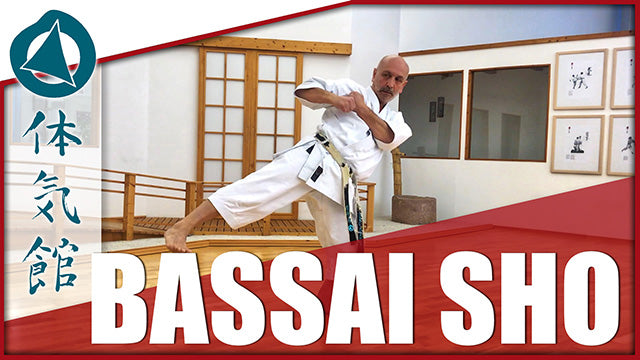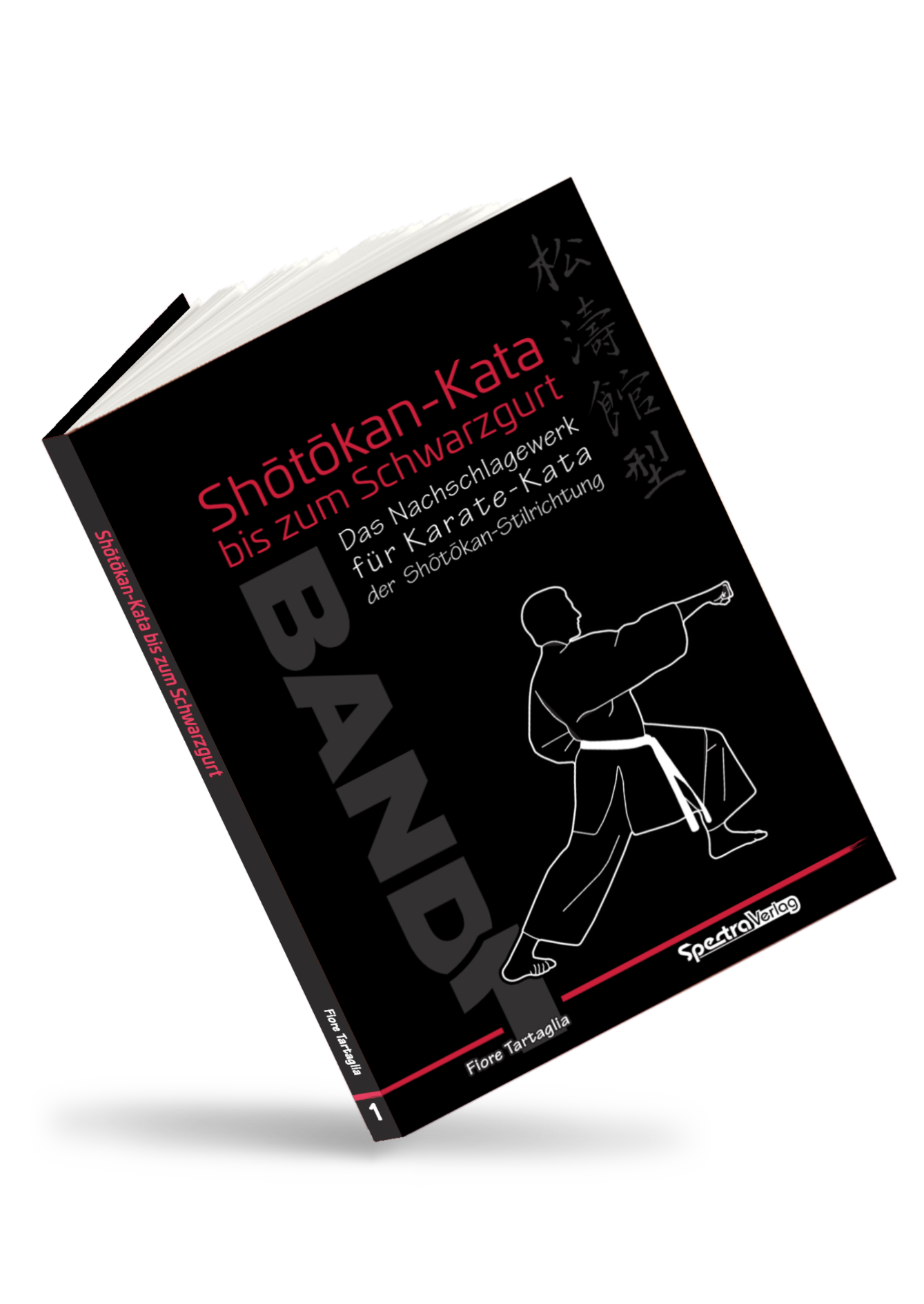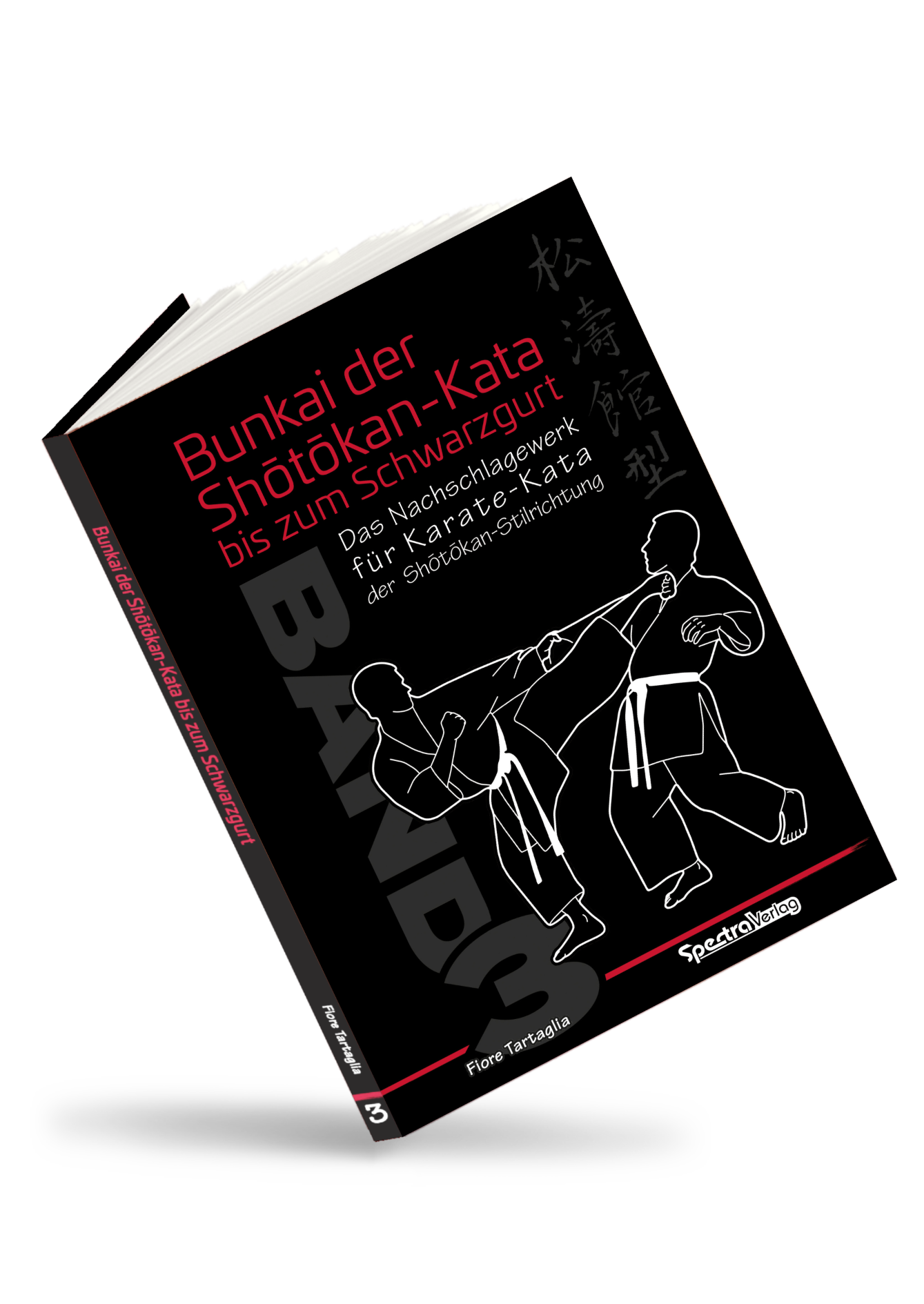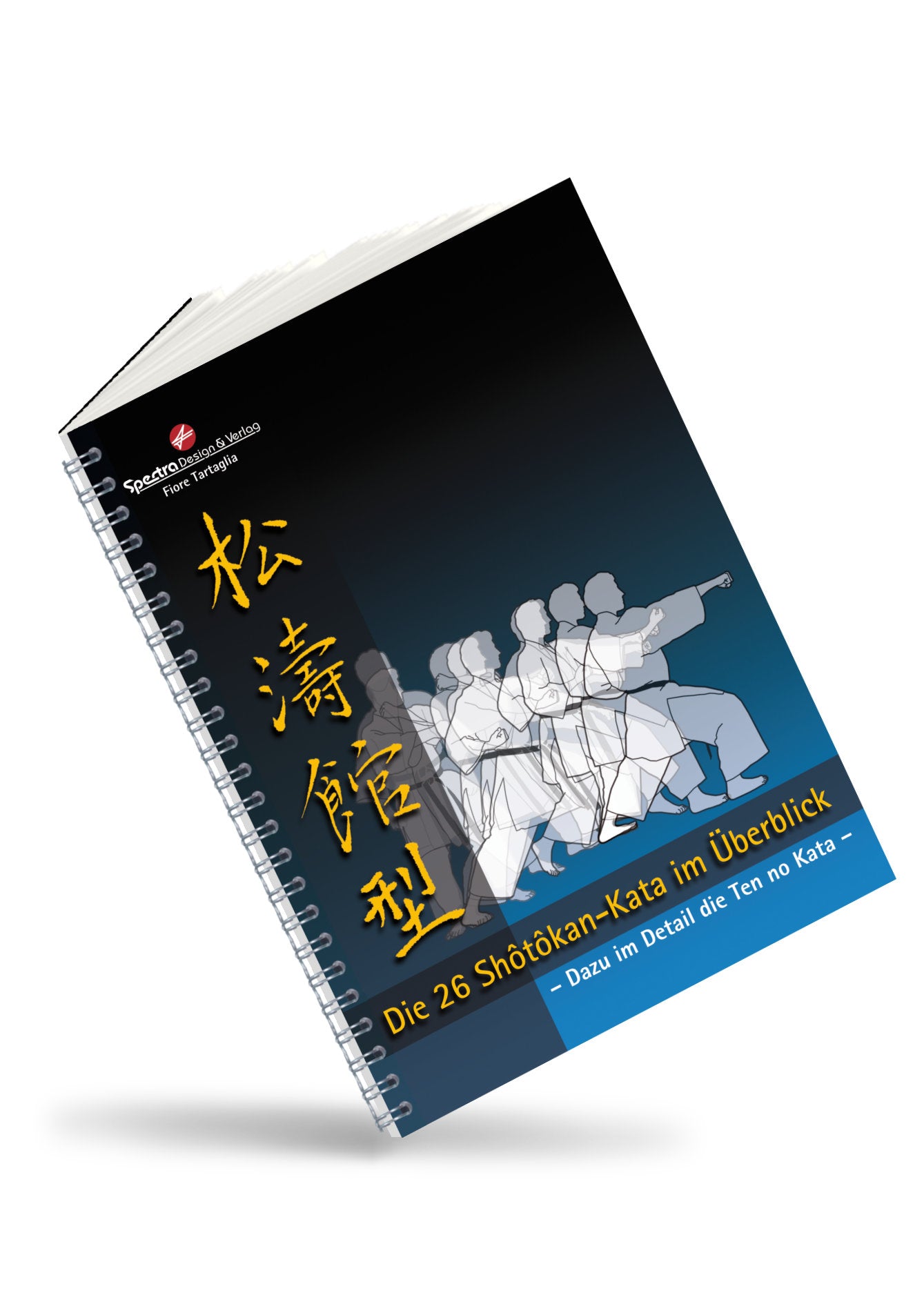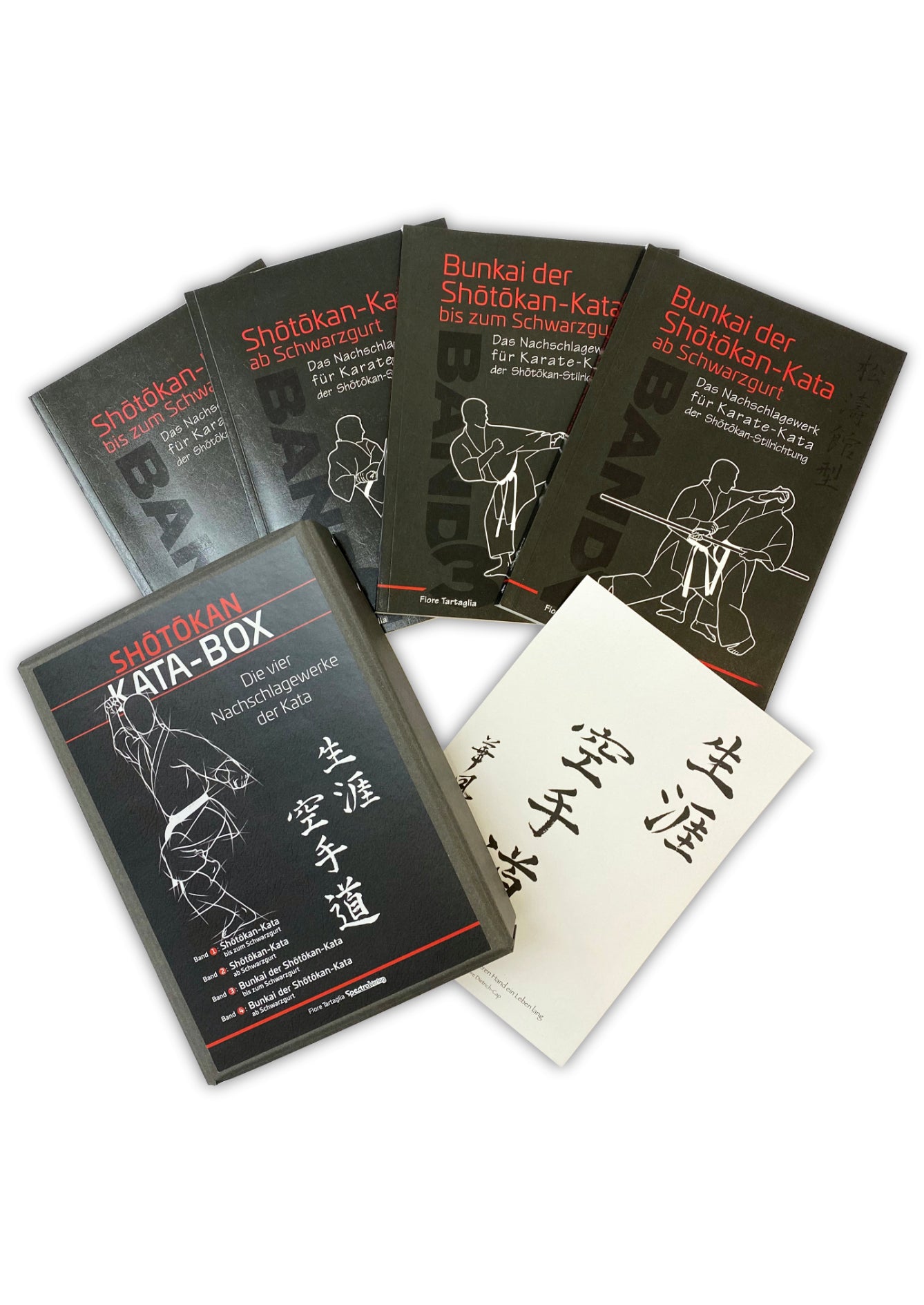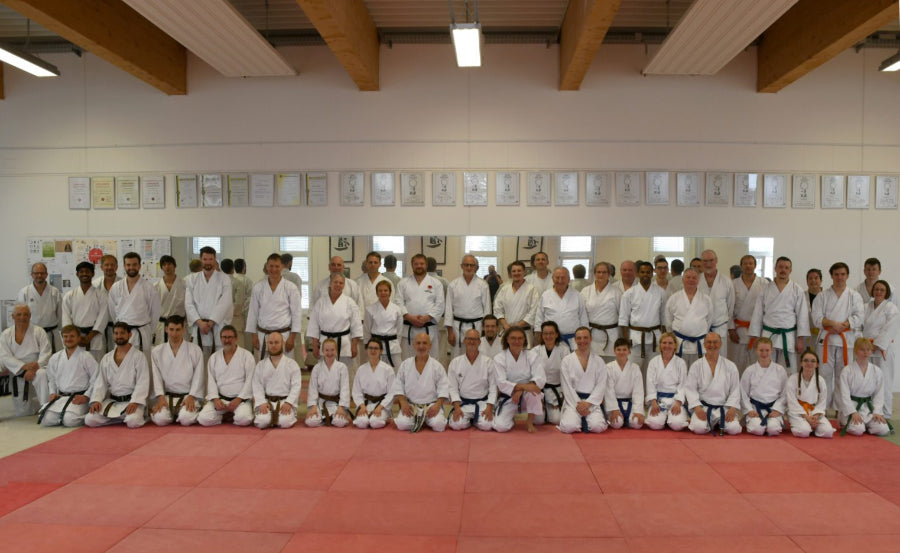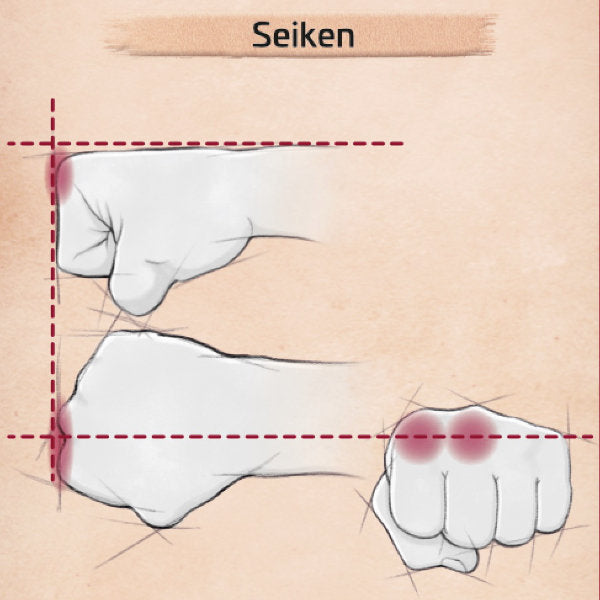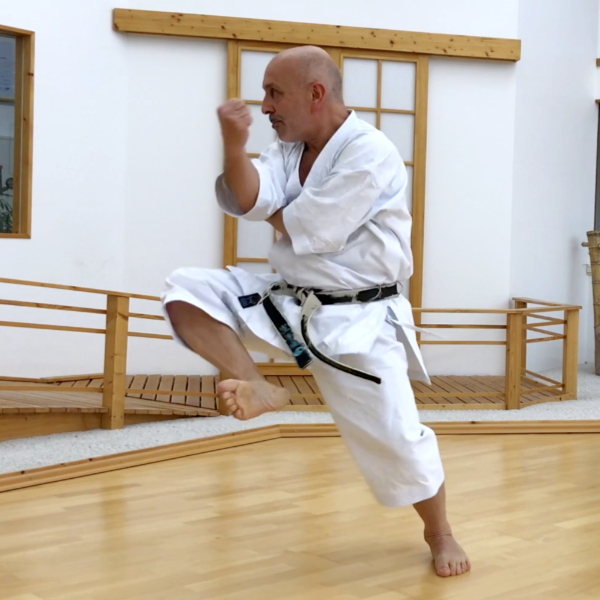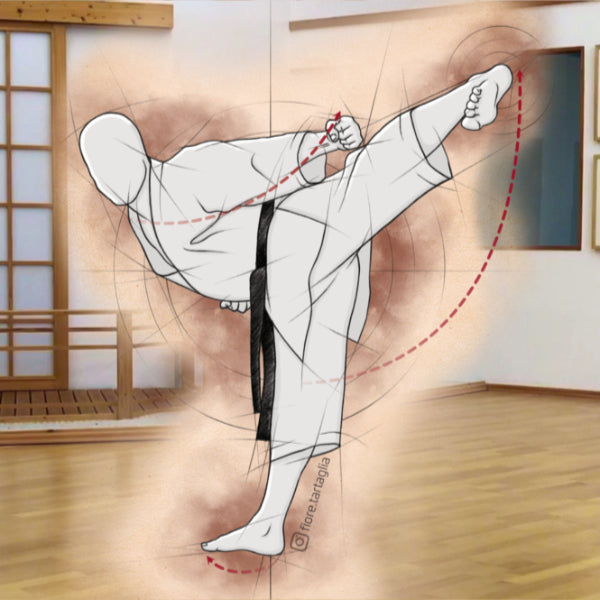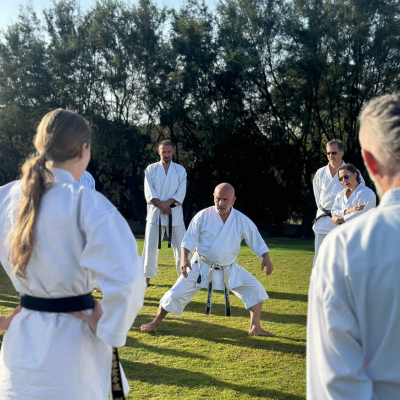KANKU DAI – LOOK AT THE SKY, BIG.
Kankū dai was originally called Kūshankū and is still called that today in Wadō-ryū and Shōrin-ryū.
Like Jion, Kankū dai incorporates several elements of the Heian series. It is the kata that, through its character and techniques, most embodies the Shōtōkan style. The name (looking at the sky) comes from the first movement. It symbolizes the sun's course: it rises in the morning, illuminates the day, and sets in the evening. The open hands (the tips of the left thumb and index finger cover the corresponding tips of the right hand) form a triangle and move slowly and circularly upwards in front of the body. Once they reach eye level, the gaze follows them. The arms move further upwards, separating at the highest point with a short impulse, moving slowly and circularly downwards along the sides of the body, and rejoining in front of the body for an attack. This technique can be used to defend against a double grip, to force the opponent's arms apart, or to attack their ribs.
With the techniques following the Mikazuki geri toward the end of the kata, you defend against a Mae geri, immobilize the foot, and strike the shin with Otoshi zuki. This technique is performed in two ways: either with the right arm over the left (as shown in the sequence) or vice versa. Both variations are correct. This is followed by a defense against a Jōdan zuki, which ends with an arm lock on the opponent by twisting the body over the shoulder.
The double foot technique in the jump (Nidan tobi geri) should be executed with the correct length so that the kata ends at the intended point. The hands remain in the previous position (Jūji kamae) until they separate to prepare for the next technique.
The kata ends with a large circular arm movement, repeating the symbolism of the setting sun.
Duration: approximately 90 seconds
